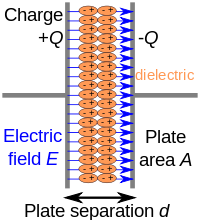
Photo from wikipedia
Dielectric barrier discharges (DBD) are highly versatile plasma sources for forming ions at atmospheric pressure and near ambient temperatures for the rapid, direct, and sensitive analysis of molecules by mass… Click to show full abstract
Dielectric barrier discharges (DBD) are highly versatile plasma sources for forming ions at atmospheric pressure and near ambient temperatures for the rapid, direct, and sensitive analysis of molecules by mass spectrometry (MS). Ambient ion sources should ideally form intact ions, as in-source fragmentation can limit sensitivity, increase spectral complexity, and hinder interpretation. Here, we report the measurement of ion internal energy distributions for the four primary classes of DBD-based ion sources, specifically DBD ionization (DBDI), low-temperature plasma (LTP), flexible microtube plasma (FμTP), and active capillary plasma ionization (ACaPI), in addition to atmospheric pressure chemical ionization (APCI) using para-substituted benzylammonium thermometer ions. Surprisingly, the average extent of energy deposited by the use of ACaPI (90.6 kJ mol–1) was ∼40 kJ mol–1 lower than the other ion sources (DBDI, LTP, FμTP, and APCI; 130.2 to 134.1 kJ mol–1) in their conventional configurations, and slightly higher than electrospray ionization (80.8 kJ mol–1). The internal energy distributions did not depend strongly on the sample introduction conditions (i.e., the use of different solvents and sample vaporization temperatures) or the DBD plasma conditions (i.e., maximum applied voltage). By positioning the DBDI, LTP, and FμTP plasma jets on axis with the capillary entrance to the mass spectrometer, the extent of internal energy deposition could be reduced by up to 20 kJ mol–1, although at the expense of sensitivity. Overall, the use of an active capillary-based DBD can result in substantially less fragmentation of ions with labile bonds than alternate DBD sources and APCI with comparably high sensitivity.
Journal Title: Journal of the American Society for Mass Spectrometry
Year Published: 2023
Link to full text (if available)
Share on Social Media: Sign Up to like & get
recommendations!